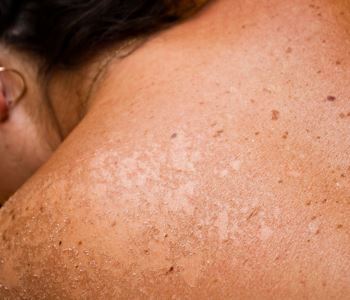With summer just around the corner, to many people this is a time to soak up the sun and get a beautiful tan and gorgeous glow. No doubt that small doses of sunlight is beneficial. However, excessive exposure to ultraviolet (UV) radiation from sunlight or indoor tanning beds can cause injury to your skin and DNA mutation that lead to many serious health problems.
The short- and long-term health risks of tanning:
No matter what you do there is no such thing as a healthy tan and there is a price to pay later for this gorgeous glow. The most common health side effects of tanning include:
Sunburn:
Long exposure of your skin to sun, will cause it to burn. Individuals with fair or light skin burn faster than individuals with darker skin. The more often and severe the sunburn is, the higher your health risk. Even in cloudy days, you are still exposed to UV rays and can get sunburn. And, contrary to the belief that tanning beds are safer than natural sunlight, indoor tanning is not a safe alternative to sun tanning and can cause the same damaging effects of sunlight because of the UV radiation it emits.
Common symptoms of sunburn:
Symptoms can range from mild redness, tender dry skin, to blisters, skin peeling, and severe reaction, such as fever, chills, nausea, and rash and this can be worse when taking sun sensitive medications, such as antibiotics, oral contraceptives, acne, or antifungals. Unfortunately, even though sunburn eventually fades, long time damage to skin cells remains.
Aging of the skin:
Tanning damages your skin cells and speed up your skin aging process. One of the long-term side effects of UV is premature aging of the skin. According to food & Drug Administration (FDA), unprotected exposure to harmful UV rays breaks down the collagen and elastin fibers in healthy young skin, and causes wrinkles, loosened folds, and leathery skin. Avoiding UV exposure is essential to maintaining healthy skin. The American Cancer Society also warns that long-term exposure can cause early skin aging, wrinkles, loss of skin elasticity, and pre-cancerous skin changes called actinic keratoses.
Skin Cancer:
Ultraviolet radiation either from sun or tanning devices are leading cause of skin cancer and the longer the exposure, the greater the risk of developing skin cancer. More than 419,000 cases of skin cancer in the U.S. each year including melanoma, the deadliest form of skin cancer, are linked to indoor tanning. The International Agency for Research on Cancer, an affiliate of the World Health Organization (WHO) includes ultraviolet (UV) tanning beds in its Group 1 carcinogen placing it in the same category as cancer-causing agents such as cigarette smoke, X-rays and asbestos.
Eye damage:
Tanning can also affect your eyes. Photokeratitis is sunburn of the cornea. It is caused by intense UVC/UVB exposure of the eye. The Symptoms are tearing, pain, swollen eyelids, a feeling of sand in the eye, hazy or decreased vision. Cataracts risk factors are too much exposure to ultraviolet light.
Restrictions and Ban on Tanning Beds
Because of the health dangers of tanning, Several U.S. states have passed laws against children and teens using tanning beds. FDA now requires warning labels on all indoor tanning equipment. Due to high health risks of tanning beds, countries like Brazil and Australia have banned indoor tanning altogether. Other European countries have banned indoor tanning for people younger than age 18.


How to protect yourself from sun damage and resume your outdoors activities:
- Protect your skin– Sun screen, shades, clothing are your best protection while you are out in the sun. Apply broad-spectrum, water-resistant sunscreen with an SPF of 30 or higher and keep re-applying regularly every two hours.
- Limit your exposure– Avoid certain hours of the day. Sun rays are strongest and most harmful between 10am- 4pm. Cloudy days can also expose you to UV light so keep your protection even in cloudy days.
- Avoid tanning beds– Stop your visits to tanning salons. If you are looking for a tan look, spray tan or fake tanning is a safer alternative and better option than sun or tanning beds without causing skin cell damage. Be cautious of using tanning pills. American Cancer Society warns of using tanning pills because of the health risks associated with it.
- Perform regular exams: American Academy of Dermatology encourages everyone to perform regular skin self-exams to check for signs of skin cancer and consult with your doctor if you notice any suspicious-looking bumps in your skin. According to FDA, assessing your risk, protecting your skin, and performing regular skin cancer checks are the best methods of prevention.